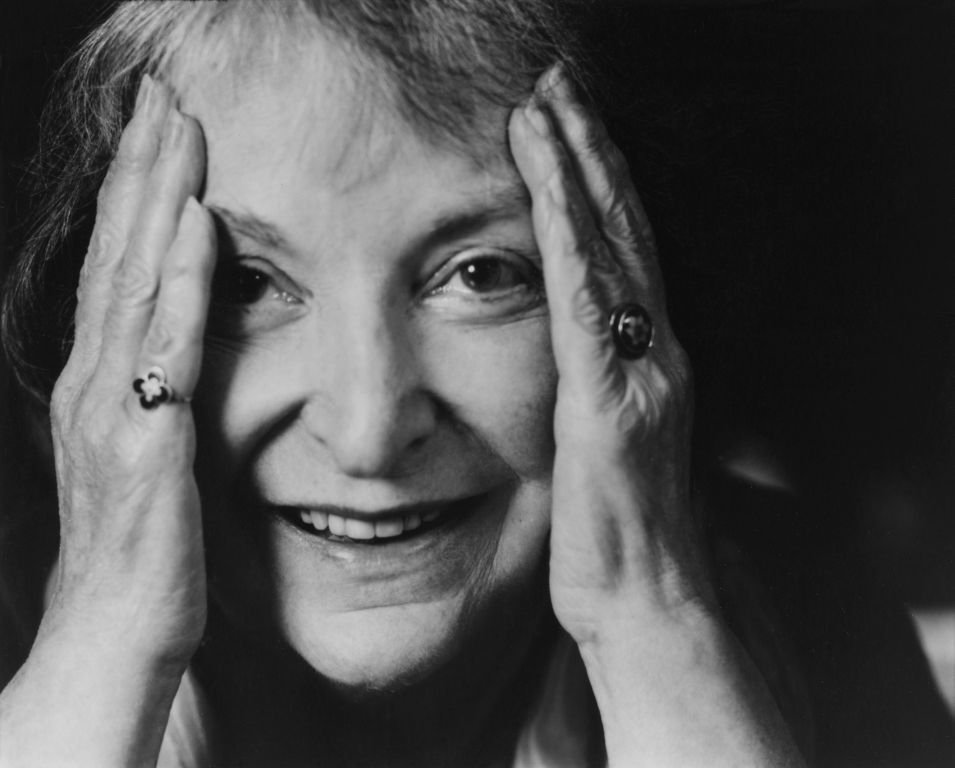Fully formed in 1973, the Walker Art Center’s Film/Video department has hosted a range of filmmakers, actors, and critics through its extensive programs of screenings, artist talks, and residencies. This blog series showcases some of our favorite visitors.
The artists that the Walker invites for visits span media, including journalism and the literary arts, making for an exciting array of guests. While much of the hubbub at the Walker in August of 1998 was about Jonathan Demme’s upcoming dialogue, there was also buzz about the critic leading the interview. Pauline Kael, the interviewer joining Jonathan Demme, was one of the leading film critics who encouraged his work as a director and knew him personally. Kael, known for her controversial opinions and lengthy reviews in the New Yorker, was well established in the United States in the second half of the 20th century.
Bruce Jenkins, Film/Video curator at the time, explained to the audience before the talk that it was a difficult task to convince Kael to visit the Walker Art Center, but he was able to persuade her to stay for two days. During the talk, Kael mentioned to the audience that she typically doesn’t do these kinds of interviews but felt this one might expand her film perspective. Jenkins’s next step was picking who to have the dialogue with Kael, and after mulling over different filmmakers, he and Kael came to the conclusion that bringing Jonathan Demme would be the best choice.
Kael had written numerous reviews of Demme’s films. She had always been excited about his “focus on the kitsch” and how he was able to transform it into art. Demme mentioned that if Kael liked a certain film of yours it’s “such a spectacular feeling—you read these things over and over.” Kael didn’t always write positively about his work, though, and Demme said those reviews were ones you only read once. At one point in their discussion, Kael mentioned that she didn’t have time to review Married to the Mob being that she was on vacation. She couldn’t help herself and started to review the film on stage in front of Demme and the audience. She mentioned that she enjoyed the film but she thought the ending was lacking—specifically the use of outtakes. The audience began to lightly boo, but Kael just laughed, saying, “I welcome your disagreement.”
The criticism didn’t bother Demme however. He sounded star-struck during their dialogue. He mentioned that he was “really having a spectacular experience this evening,” noting that not only was he at the Walker, talking in front of Walker patrons, but also was sitting next to Pauline Kael. Demme gushed that, “even before you’re a filmmaker —just a film enthusiast, one reads Pauline Kael in a certain way—agree or not—there is point of view present —an artistry in the presentation of the thoughts that arise in her mind from seeing a movie that is extraordinary to be confronted with as a movie-goer.”
At the time of her visit, Kael was discouraged by how much impact marketing had on which films stayed in theaters longer, and thus reached a larger audience. She told Twin Cities Reader, “what kills you about all this is that there are so few movies that are really good, that when the good ones don’t get promoted and nobody knows about them and instead people go to all of this crap and—what happens is they wonder why movies are so lousy.” She mentioned that she didn’t think that Demme was getting the full recognition he needed. As a film critic, she was on the lookout for exciting new filmmakers. Pedro Almodovar especially impressed her at the time.
Kael seemed to mostly keep to herself during the visit and the dialogue was her only planned Twin Cities event. Through correspondence though, we know that she was impressed by Minnesotan wild rice. Few dialogues at the Walker have half of the audience questions directed to the interviewer, but Kael proved that the critic can be just as interesting as the artist. Kael was a remarkable voice in the world of film criticism and she truly graced the stage at the Walker.
